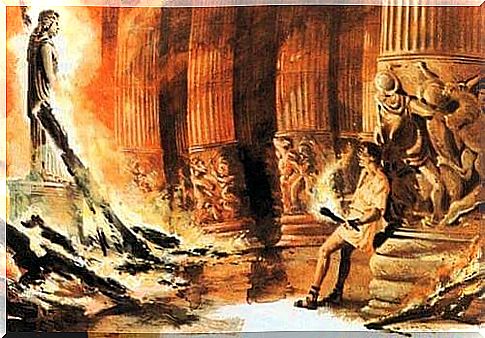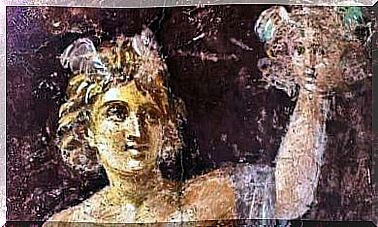Herostratus Complex: Specialists In The Art Of Appearance

We are all witnesses to the Herostratus complex. We see it in people who make the art of appearance their way of life, in a clear social exhibitionism. They are also the seekers of likes on social networks, personalities who turn the apparition into a sophisticated mask to hide their inferiority complex.
Some say that in this new era of technology culture, we’ve become a little more vain. Many of us, why not, like to show some aspect of life on the Facebook timeline or Instagram stories . Doing it once in a while is no big deal, but needing that like and constant approval on a day-to-day basis undoubtedly leads to more troubling pathological realities.
Now, the Herostratus complex doesn’t just inhabit the cybernetic universe. We see this, for example, in the posture of that acquaintance who monopolizes the communication of a group, also in the ‘ghost’ colleague at the office who strives to appear as a winner, and in countless people (and characters) who inhabit, with their obsessive cult of itself, the social landscape.
Those who live to pretend don’t just end up forming an empty and unhappy existence. In addition to the anecdotal, there is one detail that cannot be ignored: in pursuing notoriety, heroism can lead many people to engage in very harmful and exhausting behavior.

Complex of Herostratus, the man who destroyed one of the seven wonders to become famous
Historians say that on the night of July 21, 365 BC, an unfortunate event occurred that would go down in history. The protagonist of this act was Herostratus, a young shepherd from Ephesus. Even as a child, he had the blind obsession that he had been chosen by the gods to do something remarkable, something that would make him famous.
His aspiration was to become a priest of Artemis. However, as he did not have a recognized father, this aspiration was denied him. Obsessed with the purpose of being famous, he had an idea, a plan he took on the night of July 21st. He went to the temple of Artemis, one of the 7 wonders of the world and, after kissing the statue of the goddess, set fire to the entire building.
After this disaster, Artaxerxes, king of Persia, tortured him to understand the motive that led him to commit such an offence. Herostratus then declared his purpose: to go down in history as the man who had burned the beautiful temple of Artemis. Upon hearing this, the monarch condemned him to ostracism and forbade, under penalty of death, the registration of the man’s name and its connection with the destruction of the temple.
However, that order was useless. The Greek historian Theopompus analyzed the fire and recorded the name Herostratus, so that we are now aware of this fact. Furthermore, in the field of psychology, this figure was chosen to name the complex Herostratus, and thus define those people capable of doing almost anything to excel, to gain fame and recognition.
The search for notoriety, low self-esteem and criminal acts
Alfred Adler, a renowned early 20th century Austrian therapist, conducted a very interesting study explaining what can lead to a latent feeling of inferiority. Many of these profiles tend to show the same pattern that, in some way, could already be seen in the Herostratus of Ephesus itself.
These people tend to outline a life project full of idealisms that are difficult to achieve. They also have an exaggerated desire to stand out, even projecting a contemptuous attitude towards everyone around them. In many cases, because they desperately want to be the center of attention and can’t, they end up accumulating a lot of hostility.
Something like that could be highly dangerous. It is known that, in certain cases, these people affected by the complex of Herostratus can commit criminal acts. Herostratus himself did this on July 21, 365 BC, burning the temple of Artemis. David Chapman did the same on December 8, 1980, killing John Lennon. We also have John Hinckley who, on March 30, 1981, attacked Ronald Reagan.

The internal rejection that leads to violence
All these characters showed clearly pathological behaviors in their quest for notoriety. They did not hesitate to attack iconic figures in order to acquire a place in history. And they did it. We cannot, therefore, trivialize or take as anecdotal the behavior of those who live only by appearances, who have the constant need to be the center of attention and idealize themselves, despising others.
Every appearance is a reflection of serious deficiencies. They are frustrated personalities who reject who they are and try to cling to an invented image that is difficult to reaffirm to the public. As they do not always achieve this goal, they may resort to more extreme acts, such as professionally harming others, spreading rumors and unscrupulously skirting the line between what is ethical and moral and what is not.
The Herostratus complex not only limits our potential to be happy, but in many cases it can cause humans to show their darker side. Let’s keep that in mind.









